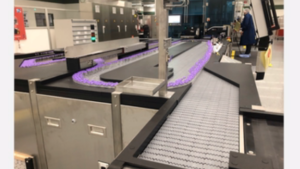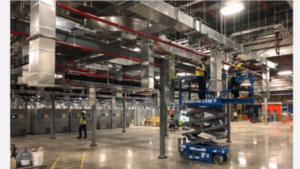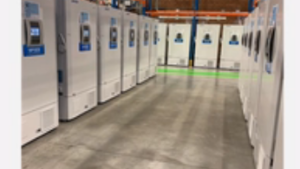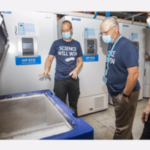The Pfizer/BioNTech COVID-19 vaccine is in the air, and in some cases, already on the ground in areas around the country. With the approval of CDC Director Dr. Robert Redfield after the FDA issued an Emergency Use Authorization on Friday, and a CDC panel recommended it be approved by the CDC for use in people 16 and older, the green light is on for vaccinations to begin.
Lt. Gov. Josh Green, M.D., spoke about Hawaii’s vaccine plans on Sunday’s Island Conversations, in a discussion with host Sherry Bracken that was recorded Friday. Green said the state will receive 81,000 doses of the first two COVID-19 vaccines, from Pfizer/BioNTech, and from Moderna. Modern’s EUA request will be reviewed by the FDA this Thursday, Dec. 17. Both of the first two vaccines require two doses to provide maximum immunity, with the shots given 3 to 4 weeks apart. Phase 3 Clinical Trials for both the Pfizer/BioNTech and the Moderna vaccines showed better than 90% immunity. But health officials caution that people must still wear masks and practice social distancing until at least 70% of the population is vaccinated.
The first vaccine shipments left the Pfizer plant in Kalamazoo, Michigan, on Sunday, and are expected to arrive in all 50 states today through early Wednesday. People lined the street to watch the trucks leave the plant. They were cheering at what may be the beginning of the end of the country’s coronavirus scourge. The vaccine is being shipped with Fed Ex and with UPS. Pfizer is planning on shipping out around 2.9 million doses in this initial wave, by the end of this week.
The Federal Government’s Operation Warp Speed is supporting the effort. U.S. Marshals are escorting trucks with the vaccine from the warehouse to the airport, and Air Traffic Controllers around the country have been instructed to give Fed Ex or UPS planes transporting vaccines top landing priority.
Pfizer has an elaborate GPS tracking and monitoring system to ensure the vaccines, once shipped, maintain their ultra-cold temperature. The shipments must be kept at around -70 or -80 degrees Fahrenheit. Each specially-designed thermal shipping box has temperature and location trackers inside, with each box filled with dry ice to ensure the vaccine is kept at the proper temperature.
Hawaii’s plan as it stands now is to have hospitals first inoculate those front line health workers who wish to get the vaccine. That should start early this week. Hilo Medical Center and Kona Community Hospital have said they have appropriate freezers to store the Pfizer/BioNTech vaccine at -70 degrees, as required, until it’s time to give the shots. Kona Hospital released photos of its practice session on how it will manage the vaccinations.
Photo courtesy Kona Community Hospital
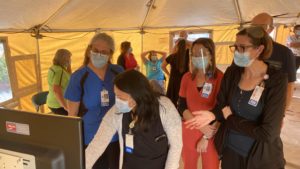
Queen’s Medical Center on O’ahu has done “dry runs”, practicing on how to proceed when boxes of the vaccine arrive.
Photos courtesy Queen’s Medical Center
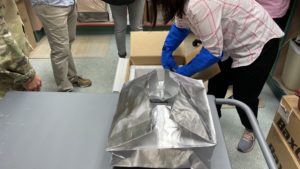
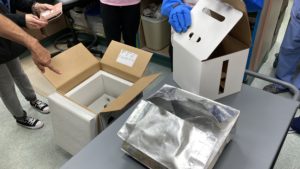
Green said after front-line health workers, those living in senior living facilities get the vaccine as a high priority. Although in Governor David Ige’s press conference Thursday about vaccine distribution, Walgreens and CVS were mentioned as pharmacies that would be involved in getting vaccines to those higher risk seniors, the local Big Island CVS pharmacists say they do not yet have details on what their role will be. KTA Superstores has also applied to be part of the vaccine distribution system.
A source within the County says that the State Department of Health is managing vaccine distribution for the Big Island. The tentative plan at this time is for first responders –police and fire personnel, who are often in the position of assisting and treating people with COVID-19–to be able to receive the vaccine at drive-through vaccination sites between Dec. 22 and 24. County Paramedics and EMTs would be part of the vaccination teams.
Those getting the shot at any location would need to wait at the location to ensure they have no dizziness or other immediate side effects. That is similar to the procedure for some current vaccines, for example, for those getting the two-dose shingles shot. Many people in the trials had side effects such as muscle soreness and a fever for a day or two. But as Lt. Gov. Green noted–those are minor compared to the suffering of COVID-19. Green speaks from experience–both as a recovered COVID-19 victim and as an Emergency Room doctor who’s seen some of the state’s most seriously ill COVID-19 patients.
Nationwide, nearly 300,000 people have died from COVID-19. In Hawaii, the number of deaths confirmed by State Department of Health is 274.
Click here for the Island Conversations with Lt. Gov. Dr. Josh Green discussing the COVID-19 vaccine. (Mayor Mitch Roth is up first–Dr. Green starts around 19 minutes into the podcast).
Photo is Lt. Gov. Josh Green, M.D. at a press conference.

Click here for a link to the Pfizer website for detail about manufacturing and shipping the vaccine, and how the company is ensuring the cold chain is maintained.
Photos, courtesy Pfizer, below the vaccine on the line, the Kalamazoo Michigan plant, the freezer farm inside the Kalamazoo plant. Attached, a look at one of the vaccine shipping/storage containers.
